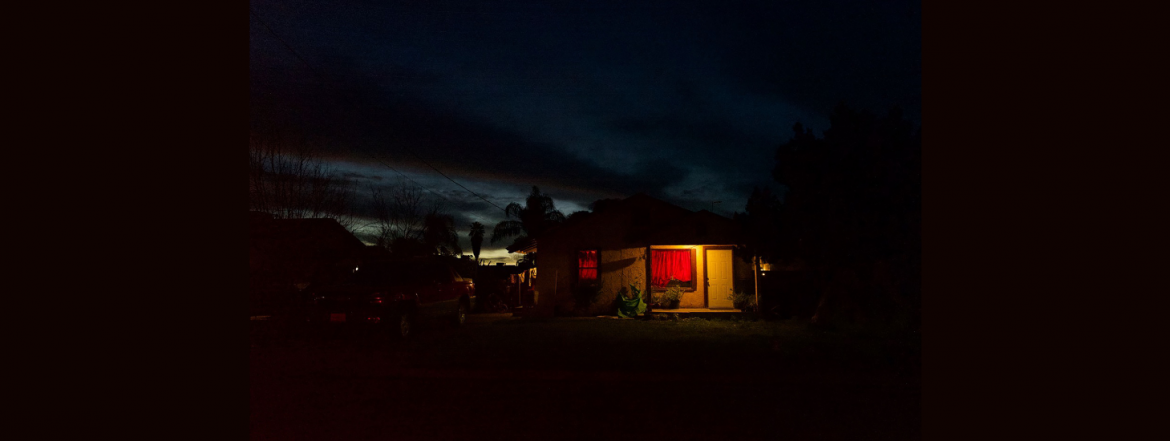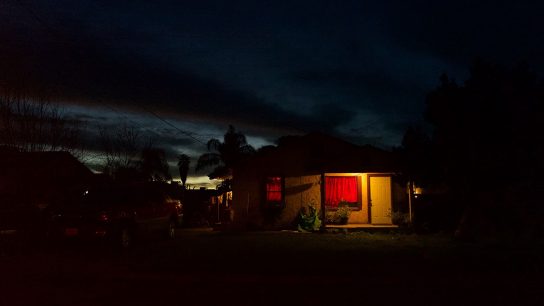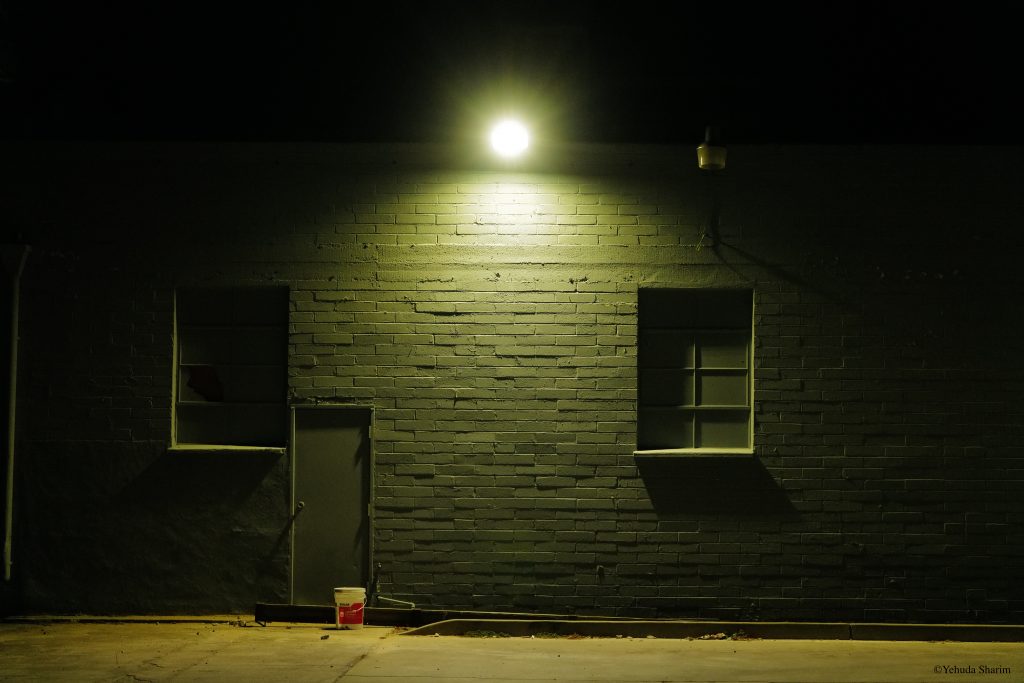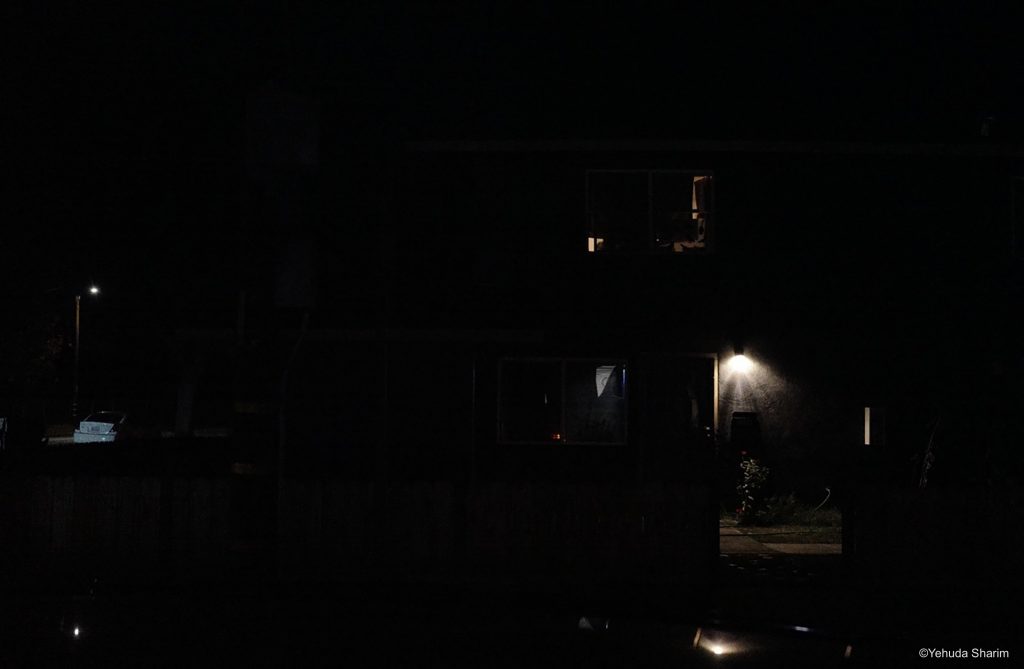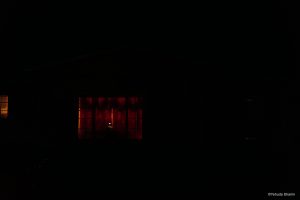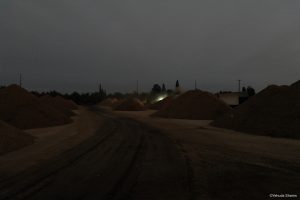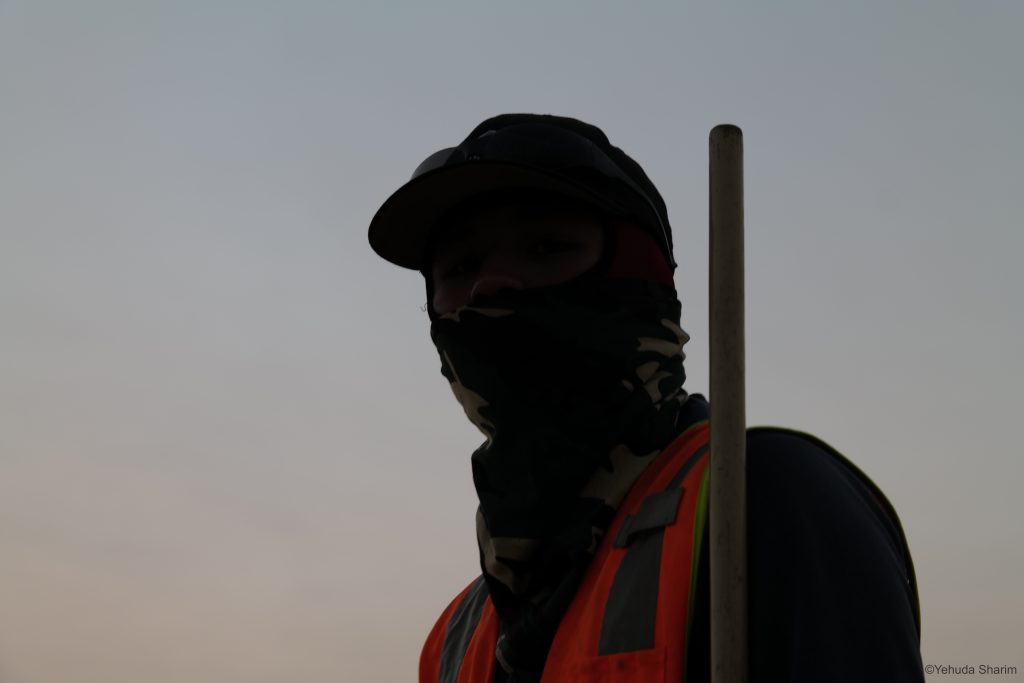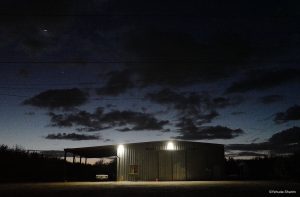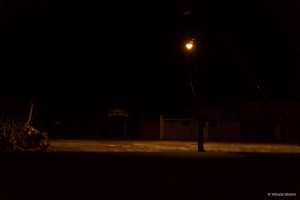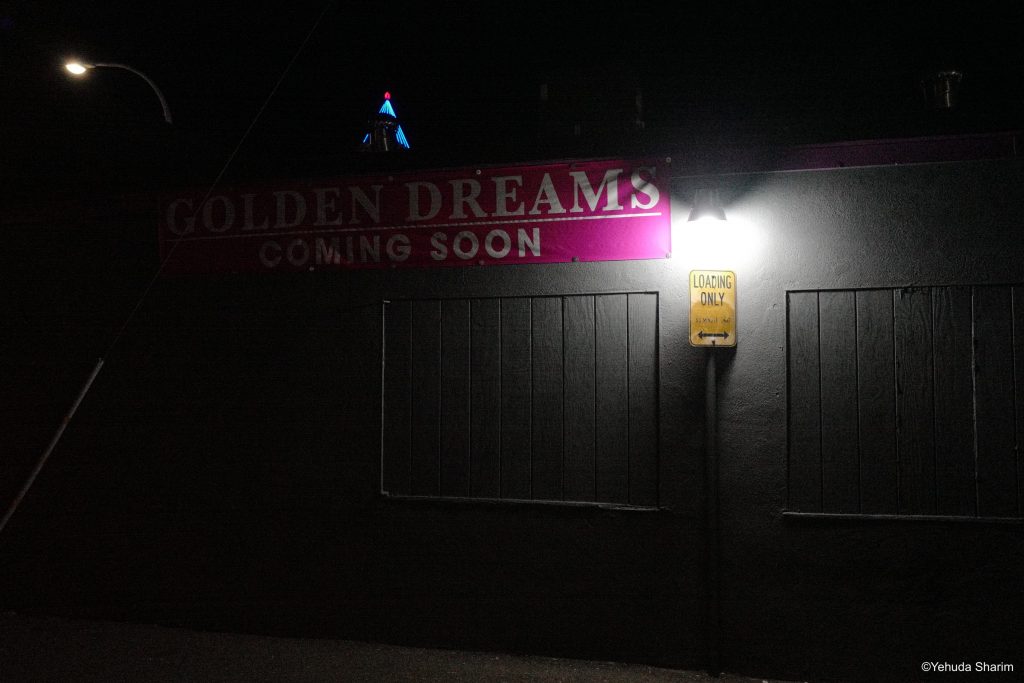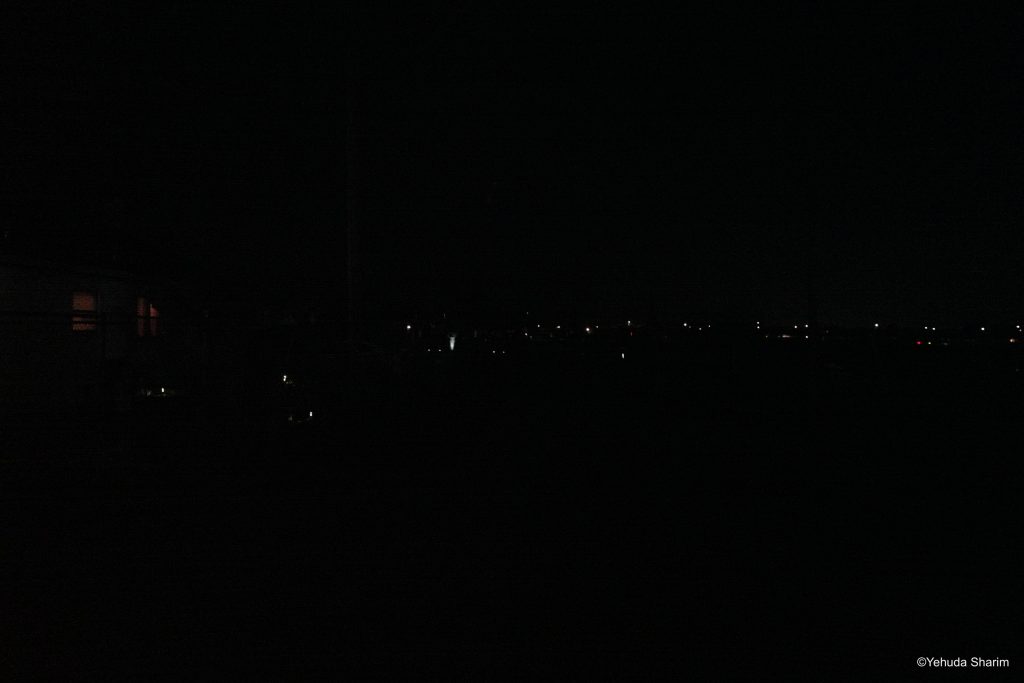A Map of Light
by
A Map of Light is a tale of and a quest for the emergence of light at a place and time that is limited in (public) lighting around the communities, alleys, fields, factories, and homes of Merced County and rural California. Scroll through this digital exhibition to wander through and explore the darkness.
watch slowly
the night asks for patience
Like your camera, you are obsessed with light.
It’s clear to you what you are looking for.
What is it in the night? The night within the night, where your uncertainty meets the unexpected. You carry the camera into the night.
Most streets across the Valley are absent of outdoor public lighting. You need to walk a while to find a nearby light. Sidewalks are absent. Through the Valley, the streets are vacant. You remain in the shadows. Across the highway and near the fields, you chase after lights and remain in darkness. You can get used to it: more and more shadows. Entire streets, highways, fields, alleys, and private homes are dominated by that thick blanket of darkness. Ana keeps telling you that “they threw darkness on us because they don’t want to see us.”
You walk in a torn Valley. Divided by fires, pain, exploitation, forgiveness, frustration, and floods. You set your watch. You promise to return on time from all this darkness, the dark light that unites us. Around the alley, a green light is a dot, unmoving. You walk in darkness and want to dream about light as safety. The night is the time for dreams but walking through the night asks you to get rid of your eyes and see better. Here, guns will not help. Here, silence is another way of seeing and being. Now, the next step is all you have. The next step or fall is all you ever have. Small steps of a small man. You said you will return around 11PM and it is already 1AM.
No lights around the side road. Shadows of almond trees and flags of “golden” America wave from the distance. The branches of the almond trees remind you of arms outstretched—American arms? Greedy arms? Emphatic arms? Unseen workers’ arms? In the valley where trees are planted for profit, drowned by poisonous plasticizers and the sweat of exploited brown bodies, silent anger is the soil. Anger is also part of your darkness. Thick, spreading, shared through silence. Begging to say goodbye. But staying. Resisting. Remaining. Asking for attention—how to look into this? Who dares to look into the night? And who dares to stay with the night and not run into light?
On G street, a crowd of four women sit in the darkness to watch a martial arts lesson. Youth in white suits learn with intensity how to clinch their fists.
On 18th street, the car wash facility remains open through the night. Here, it is always the right time to wash your car. The lights are shameless and cold: bring your car, become a car, and now you know, in the Valley you are nothing but a car, or else?
Down Main Street, a few yellow lights show you the way to the nearby gas station. A tiny dead white light asks you to pay attention to a high fence and electric doors in an alley near the gas station. Each light counts when facing the fiction of lights.
Near Atwater, you watch the cows as they cannot hide away from the light. It is the light that refuses to accept the night. It is the light of declaration and ownership. The sacred search of light is replaced with greed, muting the world, turning cows into objects, property that needs to be protected.
Sirens heard from nowhere emerge as you photograph streets of darkness. Entire streets and communities disappear into the night. You walk closer to cracks of light that penetrate through torn curtains. You notice a silent movement across the nearby field but then the sirens get closer. Did you do something wrong? How dare you straighten your gaze into the dark-black night? Aren’t you ashamed of your interest in darkness? Do you have all the permissions required to film the night? You stand alone in the darkness. You keep filming: racing cars throw flashes of lights at you. When the splash ends, you must remember that the tiny yellow dots remaining in the frame are homes and human life neglected, purposely unlit, violently pushed out of sight (to the point that we cannot see ourselves.)
You hear the sirens, but the camera is disinterested. You see movement of lights, but the camera moves away from it. Your hands hold the camera and bring it closer to your eyes. You enjoy watching the dark world through the viewpoint. It asks you to pause exactly when you would have liked to run, escape. Why escape?
Why?
Darkness is your mirror. The mirror that is beyond all mirrors. Not the mirror of muscles and sweat; but the mirror of a broken heart unmasked, of all the photos that you took with your eyes closed. It is a beautiful night. Down the main road, miles ahead, it is only an old Coca-Cola sign that is lit, red-sparkled marbles of light. Are lights part of a crown? You see only what you need and can see. The lights of the trees cannot be seen with your eyes. Your camera is blind like you, top of the line ignorance. Is it a bejeweled crown or a warning, a nocturnal deception, pay attention, poison? Red lights take over the vacant road for a brief moment.
In that drama of exposure, the sacrifice is darkness, the blurred, the inconclusive, the distant, and unresolved.1 But darkness is never mute, always unsettled while unsettling. Behind a vacant structure lit by colorful-changing lights, you are reminded that black light is never dead, always charged with shades and sounds, crickets, passing cars, and flickering movement.
You need to face it. The world is your mirror, and the night is the time of all mirrors. You need to face yourself. The conversation is between what your eyes see and all that the camera films. You see your fear and self-doubts while the camera zooms into a distant shade that then disappears. You see your father standing in the middle of your bedroom, admitting that his head is not working well anymore, while the camera focuses on a child playing with a ball and the darkness. You allow the world to come closer to you. You stand still but darkness reminds you that all is in motion, always changing, nothing remains the same. You know that you are offered a lesson here. Remain. Stay here. Remain. Stay in this body. Remain. Closer. Stay with the nocturnal.
You walk into alleys. You get closer to fences, and flooded streets around Planada. You film things, all that cannot hold, all that has been touched, again and again; a world rooted in ordinary things and spaces that tell stories, our archives that constantly slip away when we approach them. And the night is the time of all goodbyes, farewells, and other departures that we refused to accept but now forced to acknowledge.
You cannot see the source of light. It is overexposed. The camera and your eye can only perceive the aura, the peripheries, the resonance. And darkness, what is the source of darkness? Do you see it, can you watch it? You make your eyes connect with the source of light, eyelids drop, eyes shut, you end up in darkness. Can the source of light be darkness?
You get to your car, and you immediately begin recording your voice. “You are part of the road. You are part of this darkness. You are part of this search after light, do you see? And you don’t find much, and you have to settle with glimpses. You let go while the camera is in your hands. Glimpses are your world. You let go. The camera reminds you that each light counts. Each light matters. And when it gets darker, and loneliness is the only path, you learn how to let go. Darkness is a black light when you let go. And there is no light when you let go. You stare at the black-black-black. The world is under-exposed.”
you have to keep on filming
filming is like searching for light
After a year working in the almond harvest immediately after he left high school Marcos injured his elbow
No health insurance
No doctors
No medications
No checkups
Staying at home
Waiting for something or someone to heal
And then he fell in love, he has a girlfriend
Ana tells you about her beloved son, Marcos, and her gaze is buried
He is a man now and I cannot make decisions for him
He is a grown man now with an injured elbow and a girlfriend
new migrant workers fight now with clouds of dust to make the patron happy
(a week later Marcos hid his injury in the darkness and returned to work in the almonds fields, the fields of injured elbows)
The man who wronged you is in your arms now
His back is thick, sweaty
You keep embracing him
All of him
You hold tight
You feel all each of his many trembles, shakes
The man who wronged you is in your arms now
On the way home—are you crazy? Are you out of your mind, out of your life, out of your anger? A hug?! A hug?!
Yes, a hug.
Without light
Someone is waving toward you in the distance
You are not sure—is it a hello or a goodbye?
You have to walk far to find light
You see demons
Should you stop?
Leave the camera and run
Should you stay?
Is there more to see?
More lights?
You try to calm yourself
You need to learn how to remain
I trust you, we never met, but I trust you
Notes
- At home, you will read about a photographer who “looked for the perfect light,” and you will ask yourself about the perfect darkness. But what does it mean, “a perfect darkness”? for some reason it is easier to associate “perfection” with light and the composition of colors, but darkness is left untouched, even unexamined, and feared—why?
